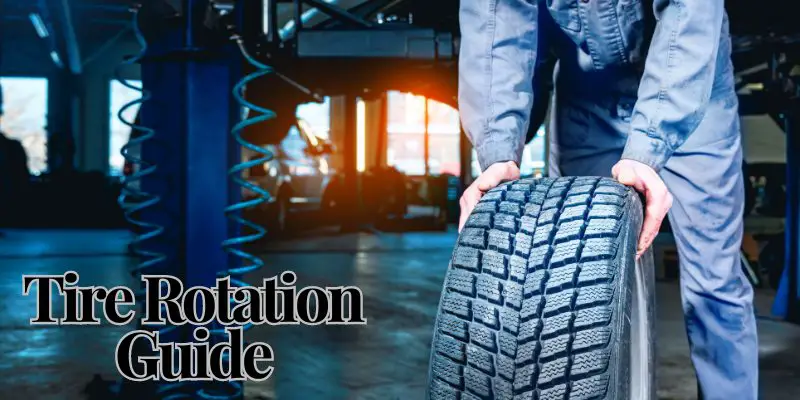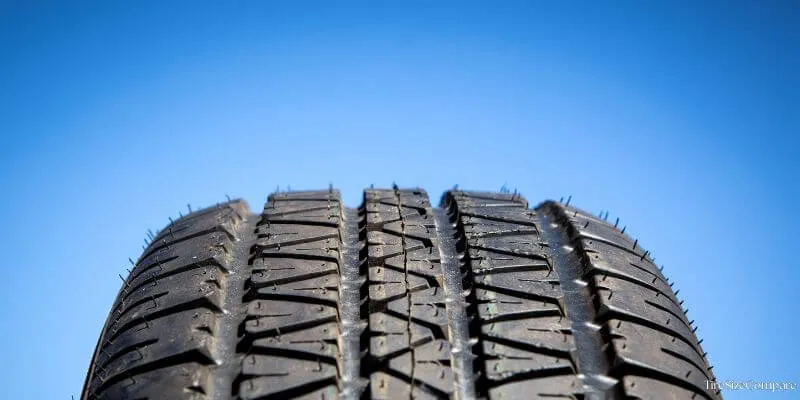What Is Tire Rotation?

Tire rotation is the practice of swapping the positions of your vehicle’s tires. This typically means moving the front tires to the rear and vice versa, often in a specific pattern. The goal is to distribute wear evenly across all four tires, as each wheel position on a car experiences different stress and wear patterns.
For example, front tires on a front-wheel-drive car tend to wear faster due to the added stress of steering and acceleration. By rotating the tires, you give each one a chance to serve in different positions, promoting more uniform wear.
Why Is Tire Rotation Important?
Regular tire rotation offers several key benefits:
- Extended tire life: By evening out wear, you can make your tires last longer before needing replacement.
- Improved performance: Evenly worn tires provide better traction and handling, enhancing your vehicle’s overall performance.
- Increased safety: Properly rotated tires are less likely to fail unexpectedly, reducing the risk of accidents.
- Better fuel efficiency: Evenly worn tires create less rolling resistance, which can lead to improved gas mileage.
How Often Should You Rotate Your Tires?
Most car manufacturers and tire experts recommend rotating your tires every 5,000 to 8,000 miles. However, this can vary depending on your vehicle type, driving habits, and tire wear patterns. A good rule of thumb is to rotate your tires with every other oil change.
If you notice uneven wear or hear unusual noises from your tires, it might be time for a rotation even if you haven’t reached the recommended mileage. Always consult your vehicle’s owner manual for specific recommendations.

Different Tire Rotation Patterns
The pattern you use to rotate your tires depends on several factors, including your vehicle’s drive type (front-wheel, rear-wheel, all-wheel, or four-wheel drive) and whether your tires are directional or non-directional.
Here are some common rotation patterns:
- Forward Cross: Used for front-wheel-drive vehicles with non-directional tires. The front tires move straight back, while the rear tires move to the opposite sides of the front.
- X-Pattern: Suitable for four-wheel-drive or all-wheel-drive vehicles. Each tire moves diagonally to the opposite corner of the vehicle.
- Rearward Cross: Used for rear-wheel-drive vehicles. The rear tires move straight forward, while the front tires move to opposite sides at the rear.
- Side-to-Side: Used for vehicles with directional tires. The right and left tires simply swap positions on the same axle.
DIY Tire Rotation
If you’re handy with tools and comfortable working on your car, you can rotate your tires at home. Here’s a basic guide:
- Gather your tools: You’ll need a car jack, jack stands, a lug wrench, and a torque wrench.
- Engage the parking brake and chock the wheels you’re not lifting.
- Loosen the lug nuts on all wheels, but don’t remove them yet.
- Jack up the car and support it with jack stands.
- Remove the wheels and rotate them according to the appropriate pattern for your vehicle.
- Replace the wheels and hand-tighten the lug nuts.
- Lower the car and use the torque wrench to tighten the lug nuts to the proper specification.
Remember, safety is paramount. If you’re unsure about any step, it’s best to leave the job to a professional.

Professional Tire Rotation
If you prefer to have your tires rotated professionally, the process is quick and relatively inexpensive. Most tire shops and auto service centers offer tire rotation services. They’ll typically:
- Inspect your tires for wear and damage
- Remove and rotate the tires according to the correct pattern
- Check and adjust tire pressure
- Retorque the lug nuts to the proper specification
Many shops offer free tire rotations if you purchased your tires from them, so be sure to ask about this when buying new tires.
Other Tire Maintenance Tips
While rotation is crucial, it’s just one aspect of tire maintenance. To get the most out of your tires:
- Check tire pressure monthly
- Have your wheels balanced and aligned regularly
- Inspect tires for damage or unusual wear patterns
- Replace tires when the tread depth reaches 2/32 of an inch
By combining regular rotations with these practices, you’ll maximize your tires’ lifespan and ensure optimal vehicle performance and safety.
Can I Rotate My Tires Myself?
Yes, if you have the right tools and knowledge. However, if you’re unsure, it’s best to have a professional do it.
How Much Does Professional Tire Rotation Cost?
Prices vary, but typically range from $20 to $50. Many shops offer free rotations if you bought your tires there.
What Happens if I Don’t Rotate My Tires?
Your tires will wear unevenly, potentially leading to reduced performance, decreased safety, and the need for premature replacement.
Should I Rotate My Spare Tire In?
This depends on your vehicle. Some cars with full-size spares recommend including them in the rotation. Check your owner’s manual for guidance.
Can Tire Rotation Fix a Vibration Problem?
While rotation can sometimes help with minor vibrations, significant vibrations usually indicate a need for balancing or alignment.
Conclusion
Tire rotation is a simple yet vital aspect of vehicle maintenance that can significantly impact your driving experience and wallet. By regularly swapping your tires’ positions, you ensure even wear, extend their lifespan, and maintain optimal performance and safety.
Whether you choose to rotate your tires yourself or rely on professional services, making this task a priority can lead to smoother rides, better fuel efficiency, and fewer unexpected tire replacements.
Remember, your tires are your vehicle’s only point of contact with the road – taking care of them means taking care of yourself and your passengers.
So, the next time you’re due for an oil change, consider giving your tires the attention they deserve with a rotation. Your car (and your budget) will thank you for it in the long run.



